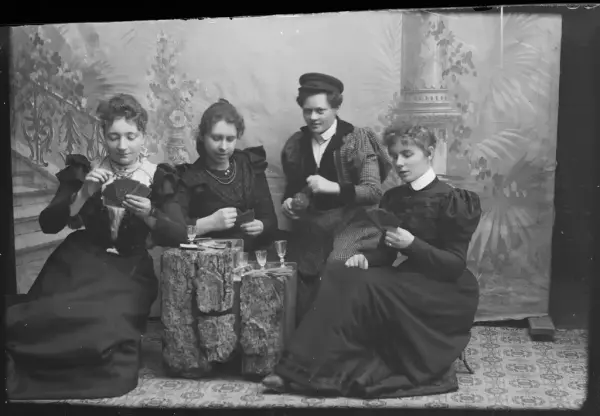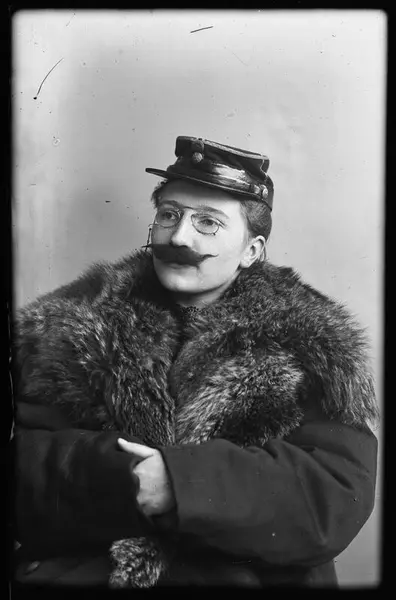-
Berg & Høeg, [Marie with a moustache], 1895–1903. Digitized from glass negative. Preus Museum collection
De to fotografene Marie Høeg og Bolette Berg hadde studio i Horten fra 1895–1903, og fotografiene deres har de siste årene fått gjenklang over hele verden!
As newly qualified photographers, Marie Høeg and Bolette Berg started a photo studio in the town of Horten to photograph portraits of people who lived here. Quite uniquely, they also took portraits of each other, where they played with gender roles and how one could look in front of the camera.
Marie and Bolette were active in the struggle for equality and for the right of women to vote, and they lived together as companions and lovers all their lives.
-
Berg & Høeg, [Marie and the dog Tuss], 1895–1903. Digitized from glass negative. Preus Museum collection.
After the years in Horten, they moved to Kristiania (today's Oslo) and started an art publishing house there. In the last years of their lives, they partly lived on a farm in Hadeland. Several boxes of negatives from their production were found there in the 1980s, including two boxes marked "private". The boxes came to the Preus museum, and they contained, among other things, the glass negatives showing the two playing different roles and playing in front of the camera. Although the photos are old, it is as if they could have been photographed today!
Marie Høeg
was born in 1866 and was between 29 and 37 years old when the pictures were taken. She died in 1949.
Bolette Berg
was born in 1872 and was between 23 and 31 years old when the pictures were taken. She died in 1944.
- 1/1
More about the photographers
Marie Høeg (1866–1949) and Bolette Berg (1872–1944) took portraits and prospects (landscape pictures) of Horten and the surrounding area and lived off the sales. Horten was a naval base with the main shipyard for the Norwegian Navy and had a large influx of people who needed pictures for parties and remembrances. Perhaps it is that the two photographers understood precisely through the portrait photography how important it is to stage oneself and to what extent it contributes to how we are perceived?
In the museum's collection, there were initially 440 glass negatives by Berg & Høeg (a further 330 were added in 2022). Among the boxes, in the 1980s, I found some that said "private" on them. It is not uncommon for photographers to also have private photographs in their archive. But these are no ordinary memories. These images tell us that the two photographers tested out different gender roles, often with Marie in front of the camera.
We know that Høeg was the extrovert and the one who started associations such as Den selskabelige Discussionsforening, Horten Ledd av Landskvinnestemmerettforeningen, Horten Kvinneråd associated with the Norwegian Women's National Council and Horten Tuberculosis Association. Bolette Berg was less visible in public. However, it must have been her who was behind the camera in many of these photographs, which have also received international attention.
We find several such boundary-breaking photographic projects in Europe and America around 1900. They correspond to women's struggle for full civil rights and for the right to define their own identity. Therefore, these photographs are part of an international story that has significance and recognition for all women – even today.







